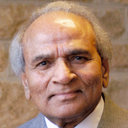Secoisolariciresinol diglucoside induces neovascularization-mediated cardioprotection against ischemia-reperfusion injury in hypercholesterolemic myocardium.
Nyckelord
Abstrakt
Hypercholesterolemia (HC) induced endothelial cell dysfunction and decreased endothelial nitric oxide formation results in impaired angiogenesis and subsequent cardiovascular disorders. Therapeutic angiogenesis is known to be a novel strategy for treatment of patients with ischemic heart disease. We have shown that secoisolariciresinol diglucoside (SDG) is angiogenic as well as cardioprotective against myocardial ischemia. In the present study, we examined the efficacy of SDG in a hypercholesterolemic myocardial infarction (MI) model. The rats were maintained on a normal and high cholesterol diet (2%) for 8 weeks followed by oral administration of SDG (20 mg/kg) for 2 weeks. The rats were divided into four groups (n=24 in each): Control (C); SDG control (SDG); HC; and HC+SDG (HSDG). Isolated hearts subjected to 30 min of global ischemia followed by 120 min of reperfusion were used to measure the cardiac functions, infarct size and to examine the protein expression profile. After treatment, MI was induced by ligating the left anterior descending artery. Echocardiographic parameters were examined 30 days after MI. Significant reduction in total cholesterol, LDL-cholesterol, triglycerides and an increase in HDL-cholesterol levels were observed in HSDG as compared to the HC. Decreased infarct size was observed in the HSDG group (43%) compared to the HC (54%). Increased phosphorylation of endothelial nitric oxide synthase (p-eNOS) (3.1-fold), vascular endothelial growth factor (1.9-fold) and heme oxygenase-1 (2.3-fold) was observed in the HSDG group as compared to the HC group. Significant improvement in left ventricular functions was also observed in the HSDG group as evidenced by increased ejection fraction (55% vs. 45%), fractional shortening (28% vs. 22%) and decreased left ventricular inner diameter in systole (8 vs. 6 mm) in HSDG compared to HC. Moreover, MI model has shown increased capillary density (2531 vs. 1901) and arteriolar density (2.6 vs. 1.8) in SDG-treated rats as compared to the HC. The increased capillary and arteriolar density along with increased left ventricular functions on SDG treatment might be due to increased HO-1, VEGF and p-eNOS expression. In conclusion, our study demonstrates for the first time that SDG treatment reduces ventricular remodeling by neovascularization of the infarcted HC myocardium.


